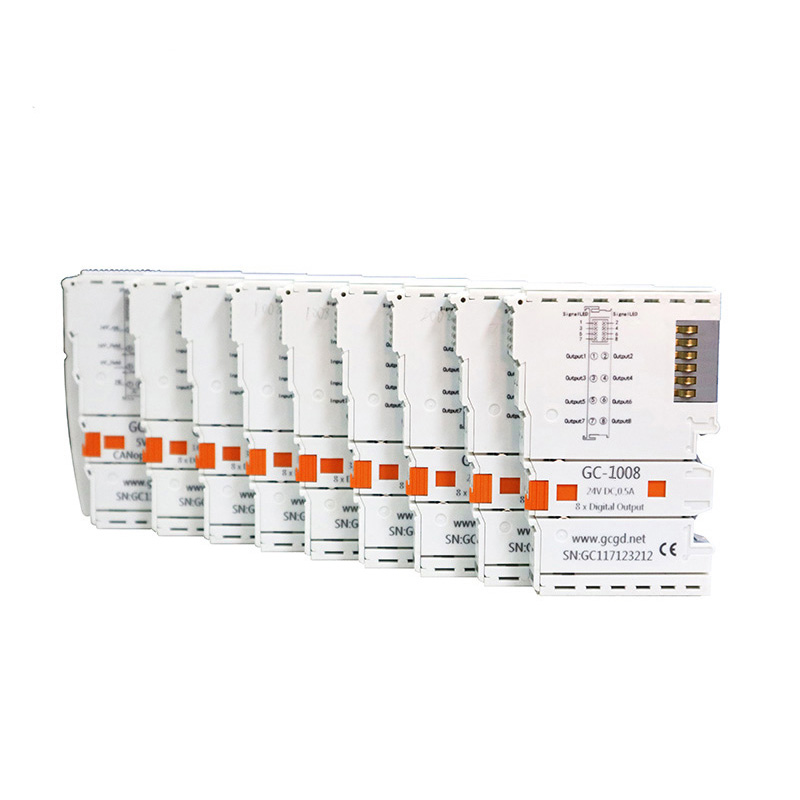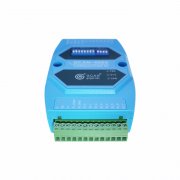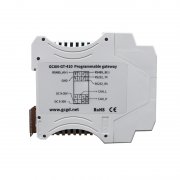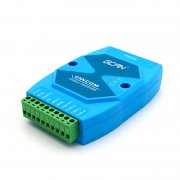7 Key Performance Indicators of PLC
What do you concern most in the PLC? I think it is the performance indicators. Here GCAN is going to introduce you the 7 key performance indicators for the PLC.
Key Performance Indicator of PLC 1: storage
Key Performance Indicator of PLC 1: storage
Storage capacity refers to the capacity of the user program memory. The user program memory has a large capacity and can be programmed with complicated programs. In general, a small PLC has a user memory capacity of several thousand words, while a mainframe has a user memory capacity of tens of thousands of words.
Key Performance Indicator of PLC 2: I/O points
Input/output (I/O) points are the sum of the input and output signals that the PLC can accept and are an important indicator of PLC performance. The more I/O points, the more external input devices and output devices can be connected, and the larger the control scale.

Key Performance Indicator of PLC 3: Scanning speed
The scanning speed refers to the speed at which the PLC executes the user program and is an important indicator for measuring the performance of the PLC. The scan speed is typically measured in terms of the time required to scan a 1K word user program, usually in ms/K words. The PLC user manual generally gives the time taken to execute each instruction. The speed of the scanning speed can be measured by comparing the time taken by various PLCs to perform the same operation.
Key Performance Indicator of PLC 4: Function and quantity of instructions
The strength and quantity of the command function is also an important indicator to measure the performance of the PLC. The stronger the function and the larger the number of programming instructions, the stronger the processing power and control ability of the PLC. The simpler and more convenient the user programming, the easier it is to complete complex control tasks.
Key Performance Indicator of PLC 5: Type and quantity of internal components
When programming a PLC program, a large number of internal components are needed to store variables, intermediate results, hold data, timing counts, module settings, and various flags. The more types and quantities of these components, the stronger the ability of the PLC to store and process various information.
Key Performance Indicator of PLC 6: Special function unit
The number of special functional units and the strength of the function are an important indicator for measuring PLC products. In recent years, various PLC manufacturers have attached great importance to the development of special functional units. The types of special functional units are increasing and the functions are getting stronger and stronger, which makes the control functions of PLCs expand.

Key Performance Indicator of PLC 7: Scalable capability
The scalable capabilities of PLC include the expansion of I/O points, the expansion of storage capacity, the expansion of networking functions, and the expansion of various functional modules. When selecting a PLC, it is often necessary to consider the scalability of the PLC.
If you need more details about GCAN products, click here: http://www1.gcanbox.com/
Email/skype: sygckj@gmail.com
Tel/whatsapp: +8613609896275
Facebook: https://www.facebook.com/gcanbox/
Buy it now: Click to buy on Alibaba
Email/skype: sygckj@gmail.com
Tel/whatsapp: +8613609896275
Facebook: https://www.facebook.com/gcanbox/
Buy it now: Click to buy on Alibaba






